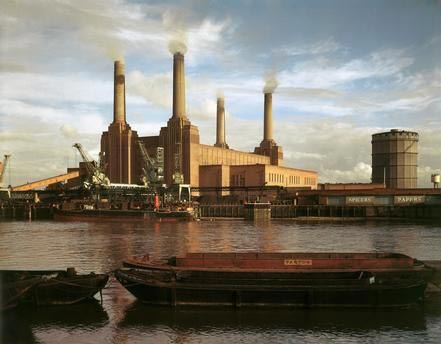A period of stability was to follow when, for a little more than a year from early 1973, I shared Giles’s flat in Claverton Street, S.W.1.
This was a rented basement in a Pimlico terrace. The enclosed back yard was a small area of concrete. There was no real sunlight. Nothing grew there. The elderly woman next door, however, enjoyed a wonderful ferny garden in what appeared to be rich soil. One day I asked her how she had soil when we had concrete. “Oh, I’ve got concrete underneath,” she said. “I put the earth on top”. “Where did you get it?”, I responded. “From Battersea Park”. She replied. “How did you get it here?” was my next question. “In my handbag”, was the answer.
This wonderful woman had trekked backwards and forwards – it must have been for years – carting bags of soil trowelled up from this London Park situated on the other side of the River Thames. The journey across Battersea Bridge would have been about a mile and a half each way.

Opposite our flat stands Dolphin Square, ‘a block of private flats with some ground floor business units ….. built between 1935 and 1937. Until the building of Highbury Square, it was the most developed garden square in London built as private housing. At one time, it was home to more than 70 MPs and at least 10 Lords.[1]
At the time of its construction, its 1,250 upmarket flats were billed by Sir Nikolaus Pevsner as the “largest self-contained block of flats in Europe”. To an extent, their design has been a model for later municipal developments.[2]‘ (Wikipedia )
Across the river from this block stands

Battersea Power Station. (Pinterest)
‘It was one of many power stations built beside the Thames. Essentially, there were two reasons for siting them beside the river. Firstly, they were initially coal-powered and the coal could be transported by sea and then up the Thames for easy delivery. Secondly, the power stations were built beside the river to provide them with a plentiful source of water cooling. Instead of just dissipating the heat from Battersea Power Station into the Thames, from 1950, the hot water from the power station was piped under the Thames to provide hot water and heating for the flats at Dolphin Square. All that came to an end in 1975 when the power station was decommissioned.’ (https://knowyourlondon.wordpress.com/2021/02/24/dolphin-square/)